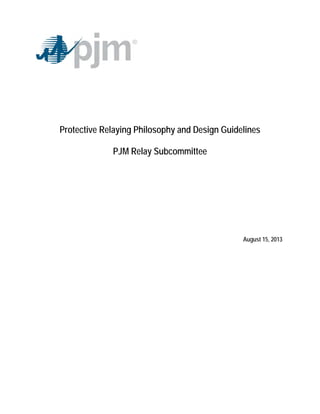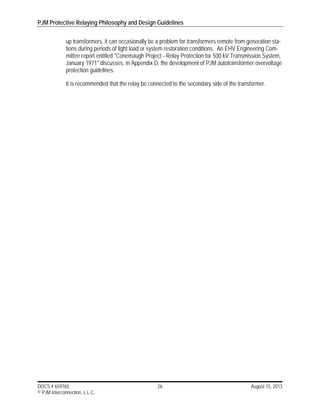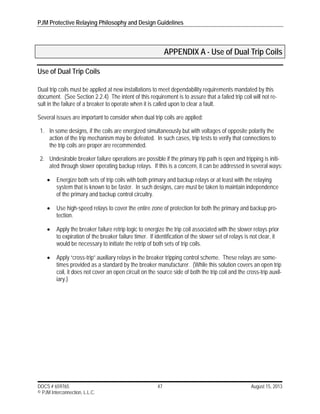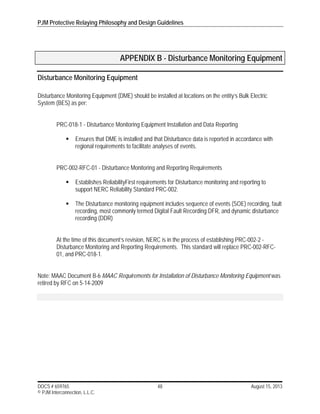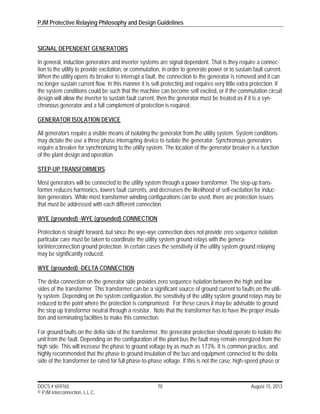This section outlines generator protection requirements for large generators interconnected to the PJM system. It requires:
1) Two independent current differential schemes for phase fault protection with independent sources and DC control circuits.
2) Two independent ground fault protection schemes, with one covering 100% of the stator winding and independent sources/circuits.
3) Field ground fault protection to detect faults and alarm or trip as needed.
4) Independent primary and backup schemes for loss of excitation detection using independent sources/circuits and coordinating with stability limits.
5) A negative sequence overcurrent relay for unbalanced current protection coordinating with manufacturer damage curves.
